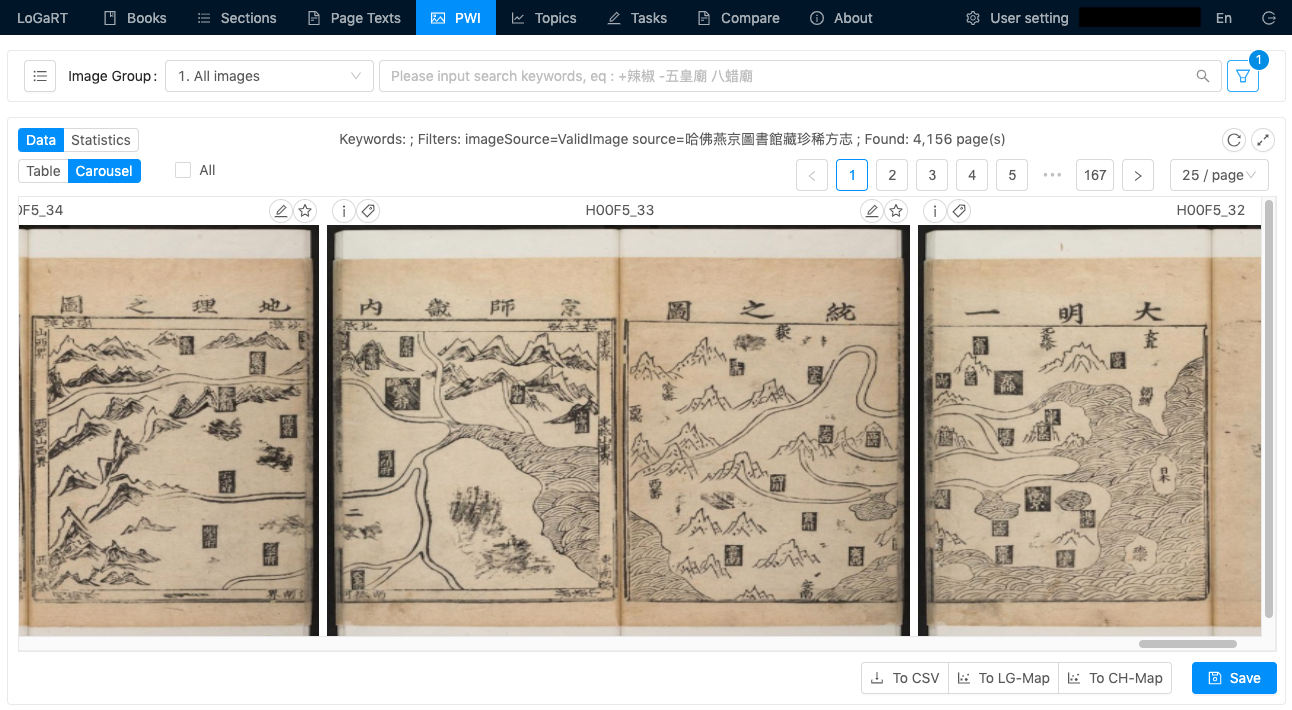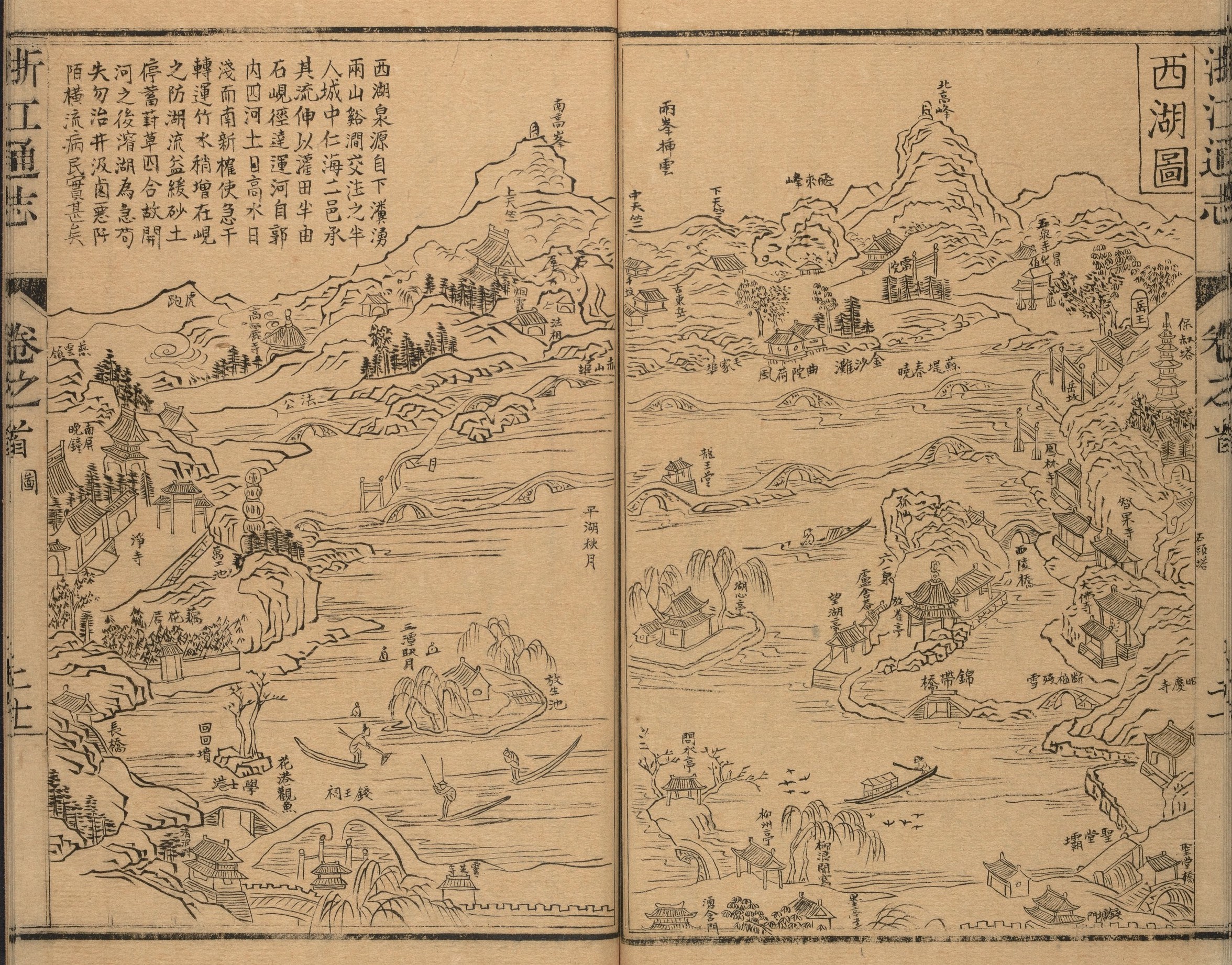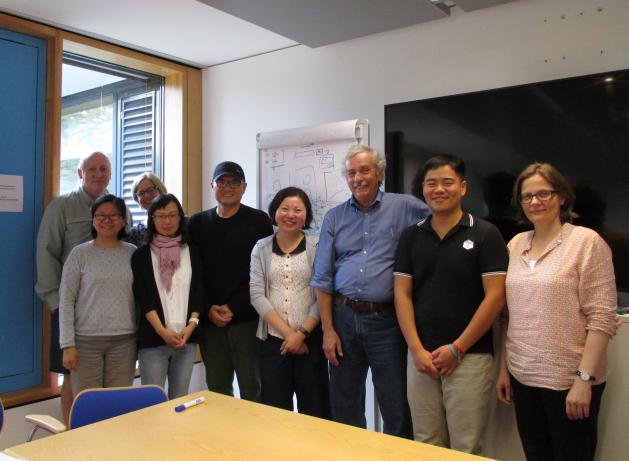This information was compiled into local gazetteers (difangzhi, 地方志), which now serve as major primary sources enabling us to study China’s local history. While many local gazetteers have been lost, around 8,000 titles are still extant today, collectively spanning a time period from the tenth to the twentieth centuries and covering nearly all populated regions of historical China. The gazetteers documented topics far beyond geographical landscapes—including flora and fauna, local products, temples and schools, officials and celebrities, local culture and customs, and much more. As well as providing a wealth of information for historians, their consistent and database-like structure makes Chinese local gazetteers uniquely suited for digital humanities research.
Accordingly, the Local Gazetteers Working Group at the MPIWG has since 2013 been conducting research on Chinese local gazetteers by transforming these printed materials into an enhanced scholarly database for new forms of digital historical analysis. Although local gazetteers are well studied, the sheer volume of information contained within them poses both a unique challenge and an opportunity to scholars. We have therefore embraced the potential of the digital humanities to realize this genre’s full utility in addressing large-scale key questions in Chinese history. Central to this effort is the development of a suite of digital tools called the Local Gazetteers Research Tools (LoGaRT).
What Are the Local Gazetteers Research Tools (LoGaRT)?
LoGaRT is a software for searching, analyzing, and collecting data from digitized Chinese local gazetteers. Through analytical features such as full-text search, geovisualization, and text mark-up and extraction, LoGaRT provides scholars with a bird’s-eye view of a collection of gazetteers beyond browsing and reading them individually. The philosophy behind it is to treat all the digitized gazetteers available as a conceptual database for historical inquiries: it therefore allows scholars to ask larger-scale questions that are not necessarily bounded by geographical regions, time periods, or individual gazetteers. According to this philosophy and research purpose, LoGaRT provides a group of digital tools (1) to search across local gazetteers across space and time; (2) to visualize search results; and (3) to collect data and encode meaning of texts and images by tagging.

LoGaRT’s image carousel, which provides a finding aid to visual materials in local gazetteers.
Digitization for Open Access
Advances in digital humanities—including tools such as LoGaRT—have transformed scholars’ workflow, but research opportunities remain dependent on the availability of primary sources. Similar to historians having to obtain permission for acquiring sources from individual archives, digital research tools also rely on existing digitized sources with the appropriate licenses for analyses. Unfortunately, the majority of digitized local gazetteers available on the market come from expensive databases sold by for-profit publishers. This situation prevents wider adoption of digital tools and more equitable access to digitized sources. Therefore, in parallel with LoGaRT’s technical development, we pursued strategies to expand the availability of open-access digitized gazetteers.
In cooperation with Harvard-Yenching Library—which holds a large collection of rare local gazetteers—and financially supported by the Max Planck Society and the Chiang Ching-kuo Foundation for International Scholarly Exchange, we hand-picked and digitized over 400 titles of rare local gazetteers over a two-year period and made them openly accessible. This high-quality collection allowed our own scholars to supplement the commercial ones they had access to and us to open up LoGaRT for the general public together with these open-access gazetteers.
A Feedback Loop between Technical Development and Historical Research
As a voluminous genre spanning more than nine centuries, local gazetteers have served as the basis for historical research into wide-ranging topics such as literary landscapes, the reception and reconstruction of local diversity, and the development of standard terminology for products and materials in China. As they were copied, re-edited, and collected throughout the centuries, local gazetteers enacted the social, political, and material composition of a place in written format: the landscape, history, flora, fauna, the taxes and products of a region, the temples and schools, officials and celebrities, local festivities and customs, weather records, and disasters were all documented within. As LoGaRT’s technical capabilities have matured over time, the Working Group has also attracted scholars whose individual research interests collectively reflect the eclectic themes documented in the local gazetteers, and whose research needs feed into iterative technical refinements and new, unanticipated features.
Scholars have used LoGaRT to conduct their research in primarily three ways. First, many have used full-text search to identify key terms as a proxy for the historical presence or absence of certain objects or phenomena. Jeffrey Snyder-Reinke, for example, looked at the descriptions of infant burials and columbaria in local gazetteers as evidence for shifts in societal attitudes toward infant mortality in historical China. Second, scholars have used LoGaRT’s section search function to isolate the same thematic section across multiple local gazetteers, which has enabled them to extract information about a specific theme across geographic regions and/or time periods. In some cases, the presence or absence of certain thematic sections in specific gazetteers was also indicative of large-scale patterns or historical changes. Ian Matthew Miller, for instance, whose research looks at the long-term interplay between social and environmental change, used information in the forestry sections to chart the development of administrative structures that have governed the logging industry and its associated taxation. Third, using LoGaRT’s extraction interface, scholars have tagged texts from multiple local gazetteers to collate and compile stand-alone datasets that serve as a curated “digital concordance” for re-use and further investigations. For example, Joseph Dennis—whose research focuses on the history of Chinese print culture, law, and society—tagged any information related to book holdings in school libraries to produce a concordance that maps the circulation of books and knowledge across formal spaces of learning.

張衡. 浙江通志 :50卷, 卷首 : 1卷. [China], 康熙23 [1684]. Harvard College Library Harvard-Yenching Library, https://nrs.harvard.edu/urn-3:FHCL:14265319.
Researcher Collaboration using LoGaRT
To actively foster environments where historians and digital tool developers can work side-by-side and enrich each other’s work, a key strategy of this Working Group also involves holding intensive workshops based around specific themes. LoGaRT’s image-based features, for instance, were developed in conjunction with and in response to scholarly feedback during a series of workshops on visual materials in local gazetteers. Such technical and research advances demonstrate the potential for digital humanities to produce mutually beneficial and innovative research outcomes. Through further development of LoGaRT we are committed to promoting this practice in the discipline of the history of science, technology, and medicine and opening up primary resources to historians globally.
Looking beyond Chinese local gazetteers, LoGaRT points to how digital humanities could transform historical research both fundamentally and methodologically. Its analytical features encourage scholars to supplement the close reading of primary sources—whether print or digital—with a more distant and expansive perspective that focuses on genre-specific structures and historical contexts. This combination creates a more generalizable research workflow for digital humanities, especially the application of digital methods to individual genres of texts. For instance, we are now expanding the digital research methodology and research tool development processes behind LoGaRT into another genre of structured texts in Chinese history called household encyclopedias (riyong leishu, 日用類書). We are also applying insights gained from LoGaRT’s development, which was a discrete and specialized tool for a specific genre of texts, to broader digital infrastructures that will allow scholars to re-/use texts (such as Chinese local gazetteers) in any tools of their choosing. By gradually decoupling specific text-and-tool combinations and promoting interoperability among texts and tools, we seek to ensure that digital research products are able to remain useful across digital humanities even after the end of their active development.

The Tu” Working Group-Team at a workshop in 2018. Source: Sean Wang/Dept. III Administration.
